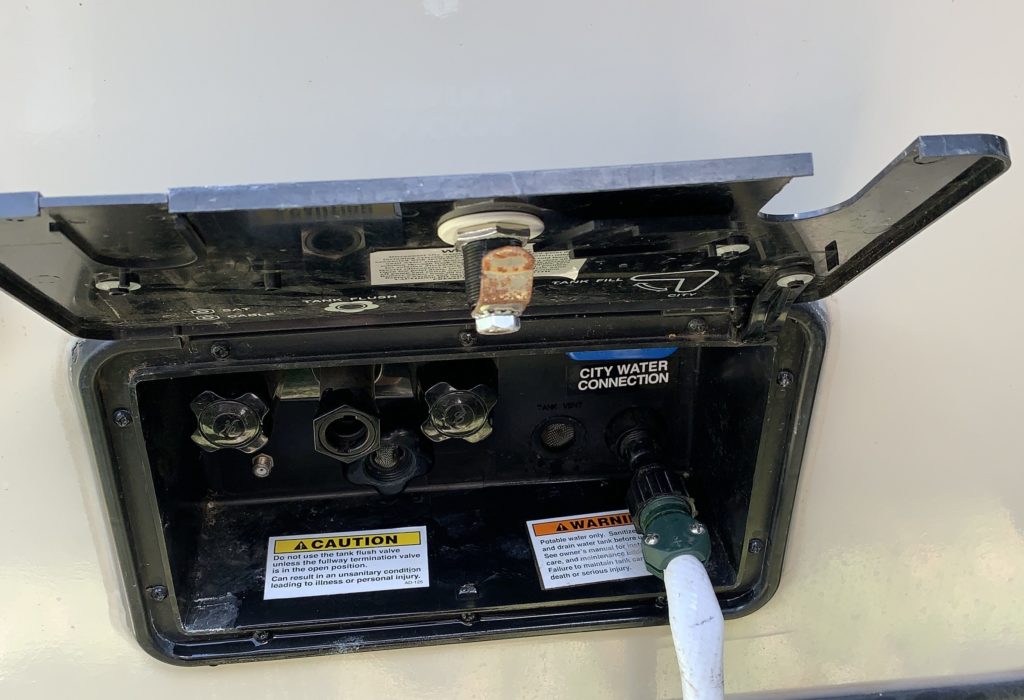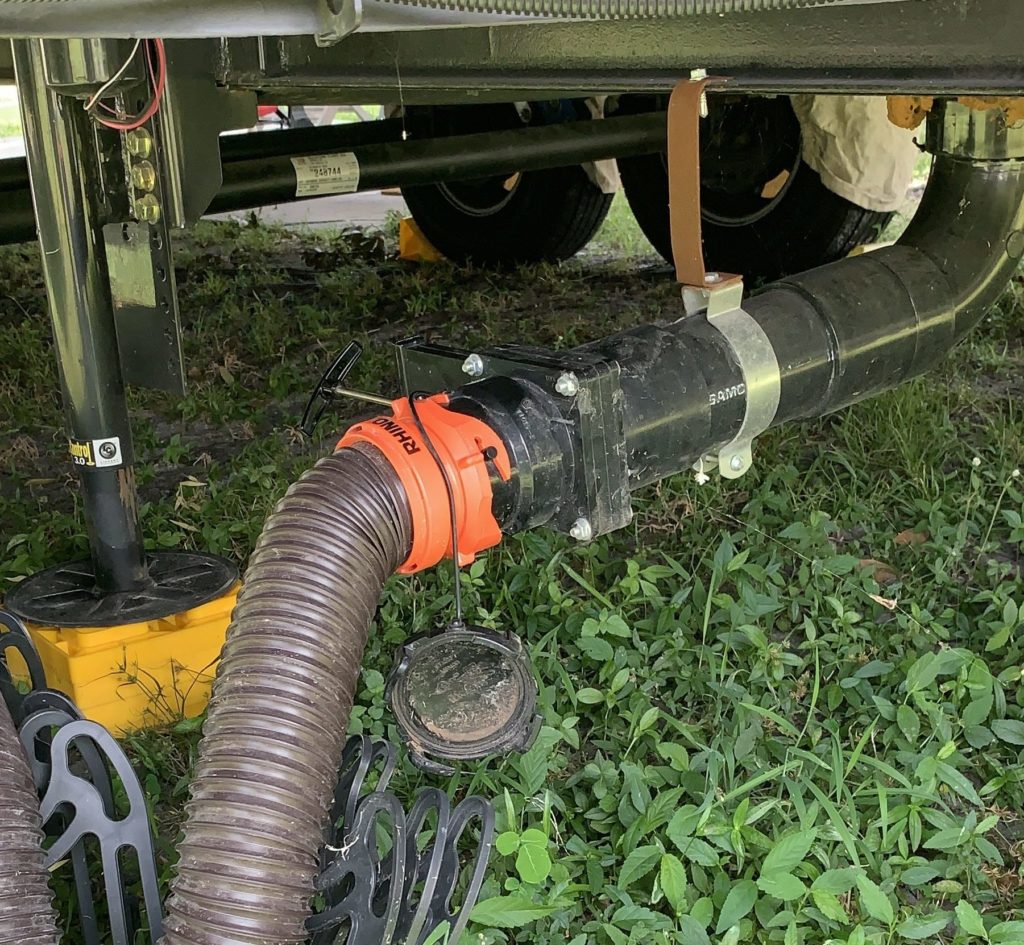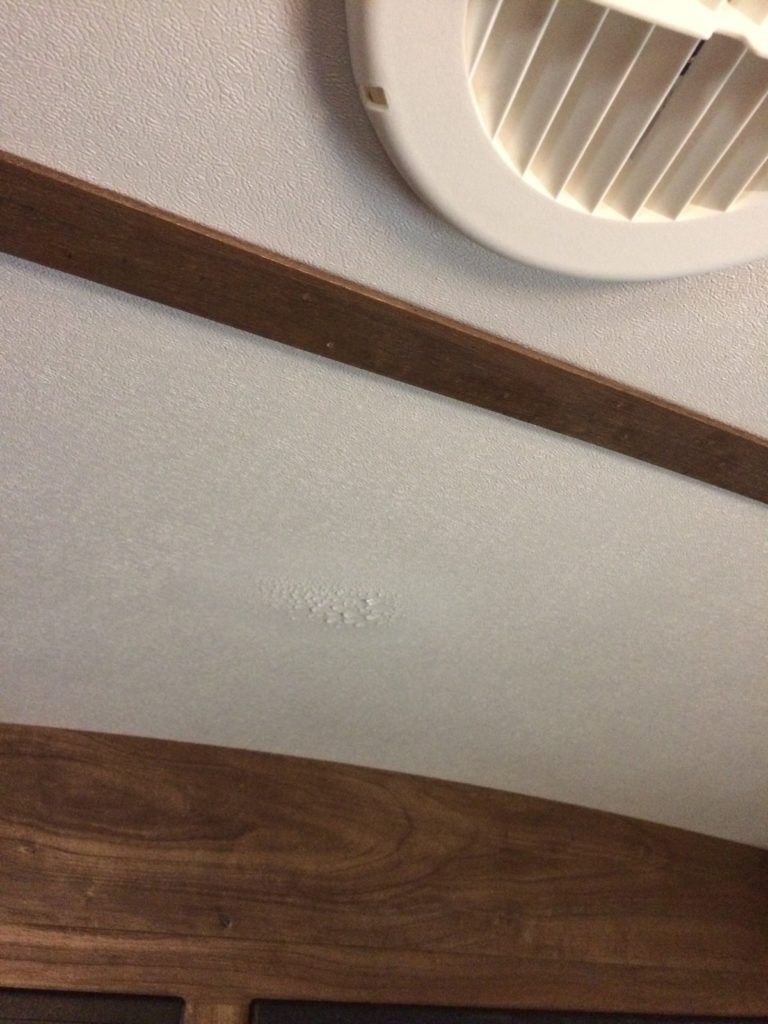RV water heaters are one of those appliances that we don’t think of until there is an issue. That little water heater works hard, especially when you are full-time RVers.


A couple weeks ago, we woke up to the worst infestation of ants we’ve ever had. We’ve only had a few (and only once before in the RV) but wow, this was a doozy. We’d moved to a new park the night before, and I guess they thought we were a new food truck rolling into town. We discovered them when we opened the pantry to make breakfast the next morning. The ants were everywhere. They marched right up the rear jack beneath the pantry, and found an entry point. They were also entering through the front door, but that must’ve been very new because they hadn’t reached any food yet. They were just wandering aimlessly. The pantry in the RV is quite large, and it was full. We lost about $100 worth of food. We’d become a little lax about the types of open packages that stayed in the …
It was a rainy weekend in Crescent City, so I did a few things inside the RV while David took a few urgent repair calls. There was another Siete cooking class… I missed out because I was a little too exhausted this week. But look at these adorable gifts! I did make one part of the dish made in class: chorizo refried beans. Two cans of pinto beans blended with a packet of Siete chorizo seasoning. So good with chips! There were naps. I reorganized the cooking gadgets cupboard. We’ve grown a lot since the first time we did this: we love our 3-quart Instant Pot so much that we decided to get a 6-Quart with an air fryer lid. The air fryer broke recently, and we replaced it with an Instant Pot brand air fryer lid. Our two saucepans are in the top shelf behind the blender cups and …
As a mobile RV tech I have addressed many black tank problems, ranging from simple clogs to tanks that have fallen off their supports. An RV black tank has a very important job to do and works well when it is given the proper tools and conditions. The black tank is not complex, and works by breaking down the solid waste into a slurry, allowing it to exit the tank without clogging. The solids are broken down by bacteria and lots of water. Some of those bacteria give off methane, others do not, and methane is one of the chemicals that gives black tanks their unpleasant smell. The key is to encourage the less-stinky bacteria to flourish and keep the stinky buggers away. Given a good environment and enough water, the solids are broken down within 24-48 hours. Here are some questions I’m frequently asked about black tanks: I …
We love our moving day checklists. There are so many different parts of moving day when you’re moving an RV, that it’s too easy to forget something minor that becomes a major hassle later. We double- and triple-check anything safety related (like hitching the trailer to the truck) with or without a list, but rushing to pack up the RV could mean getting to your destination with a gallon (or more) of water on the floor, the contents of your cupboards all over your floor, or just stinky because you forgot to take the trash out before you closed everything up up and traveled 300 miles on a 90-degree day. We use iPhone’s built-in Notes app, and have 3 shared checklists, so when one of us checks off a task, it updates the other’s list. There are other apps out there that work in similar ways, and this isn’t ideal …
Our first major mechanical breakdown as full-time RVers.
RV water heaters are one of those appliances that we don’t think of until there is an issue. That little water heater works hard, especially when you are full-time RVers.


How long has it been since you sanitized your fresh water system in your RV? Did you know your fresh water system needs to be sanitized on a regular basis? Even with a good filter, algae, debris, and bacteria can build up in the fresh water tank and plumbing.
The sanitation process can take several hours, and will require access to a fresh water supply.
We have a Keystone Laredo travel trailer with a 43 gallon fresh water tank, and our water cabinet includes the fresh water fill inlet, fresh water tank vent to prevent overfilling, valve for switching between onboard water and city water, black water flush inlet, outside shower port, and the cable TV connections.

Waste water tanks are not high on the list of fun things to do while RVing. We have two gray tanks, and the way the manufacturer installed our kitchen gray tank’s dump valve does not make the process any more fun. Basically, they were installed “backwards.” In order to open the gate valve you have to climb under the edge of the slide floor and electrical cables, and the valve must pulled away from you in order to open it.

Humidity can a real problem while living in an RV. We have been traveling east, officially leaving the dry desert and entering bayou country. On the first night of 90% humidity, we wondered when we would be dealing with complications of humidity in our RV life.
The next morning, while making my morning tea, I noticed a six inch round spot on the ceiling with condensation forming.

Where do we hide our dirty laundry? With limited space, we needed a place to store it until laundry day. Our rig has a pass-through storage compartment under the front of the trailer, which is under the bedroom closet.
Rather than keeping a hamper for dirty clothes alongside the clean clothes in the closet, I decided to make a laundry chute.
